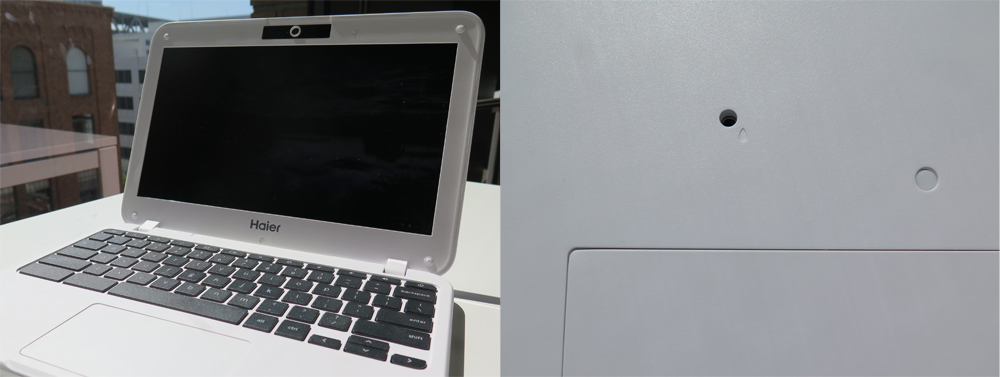What could possibly be more dangerous to a mobile device than a tiger? Try elementary school students.
As part of Google’s plan to expand Chrome products across consumer and enterprise industries, the company announced today it will soon sell a Chromebook designed specifically for education. The Haier Chromebook 11e “is built to be abused,” declares Rajen Sheth, Director of Product Management for Android and Chrome for Business and Education.
When “kids shove [a device] in their backpack, then books start slamming against it and break the screen,” Sheth says. The 11-inch device boasts 10 hours of battery life, a removable battery and—hold your breath—a spill-resistant keyboard so that any splashes of liquid will drain out of a hole on the bottom of the Chromebook.

Still, there’s no 100-percent breakage-free guarantee: “Fourth graders are going to find a way,” Sheth concedes, “but it’s a lot harder to break [this Chromebook] than the other devices out there.”
Google’s not the only one trying to “kid-proof” its devices. Lenovo offers one that’s supposed to withstand the “daily rigors of K-12 education” since 2013. The Haier Chromebook 11e is expected to be less expensive than Lenovo’s $429 price, but Google has not shared specific pricing details so far.
And, perhaps to address the ongoing “tablet versus Chromebook” debate in schools, Google will also be releasing later this spring the ASUS Chromebook Flip, which combines both a keyboard and touchscreen in one device. (The look is similar to the ASUS Transformer Book that runs Windows 8 OS.) Weighing less than two pounds, it will be available later this spring for $249.

There’s also a Chromebit, a Chromebook (minus the keyboard and trackpad) that fits in a device the size of a USB stick. With a built-in Chrome operating system, the Chromebit can be plugged into any monitor or display via an HDMI port. (It’s like the Chromecast—but without the need for a Chromebook.) The device can then be connected via bluetooth to a keyboard and mouse—or to a mobile phone which can be used as a keyboard. The Chromebit is set to be available this summer for under $100.
“If a school has a digital display, a teacher can plug this is in and use it for whatever they want,” says Sheth.

According to Futuresource Consulting, Chromebooks have captured 42 percent of the K-12 mobile device market in North America in 2014 (up from 16 percent in 2013). But in education markets elsewhere, Chromebooks barely have a foothold.

That will likely change: Haier and HiSense—another new Chromebook manufacturer—are making their devices available for $149 apiece in an attempt to expand into developing markets. Get ready for a price war: the media is already running headlines around how Microsoft is trying to “ kill Chromebooks” with its own $149 Windows 10-based laptop.
“There are a lot of centralized deals in the international market where [Chromebook adoption] goes from zero to a lot very quickly,” says Sheth, who adds that there are “hundreds of thousands” of Chromebooks deployed in countries like Malaysia, whose government adopted Chromebooks and Google Apps for Education for all of its students in 2013.
“We think this blueprint we have in Malaysia can now spread in multiple places,” adds Sheth, rattling off Brazil, Turkey, Thailand and the Philippines as countries where conversations are underway.


